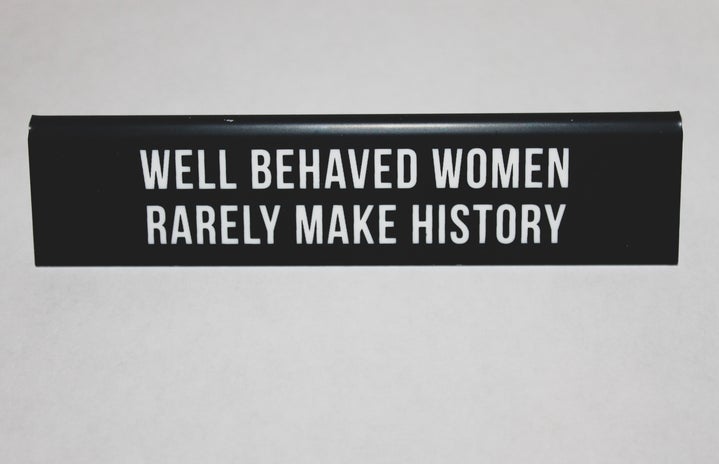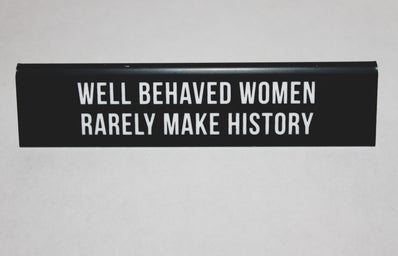When we think about famous women, probably the first names that come to mind are those of singers and actresses; and while they deserve credit, there are other remarkable women who have been pioneers in fields like environmentalism, women’s rights and science. They have broken the mold of traditional women’s roles, and their work has made a difference in our society, so they should receive more recognition. Here are ten pioneer women, of whom we should all know more:
1. Clara Barton (1821-1912). At a time when it was rare for women to work outside their homes, Barton was one of the first women to work as clerk at the US Patent Office, and while working there had to endure bullying and defamation from her male colleagues, so much so that her job position was reduced from clerk to copyist. Later on, triggered by the start of the American Civil War, Clara Barton became a nurse and humanitarian, during the post-war era she worked for the Missing Soldiers Office. Inspired by her visit to Switzerland she founded the American Red Cross in 1882.
2. Emmeline Pankhurst (1858-1928) was the leader of the suffragette movement in Britain and founder of the Women’s Social Political Union (WSPU). She fought strongly for women’s right to vote. One of the first first places in Europe to grant voting rights to women was Finland in 1906. While women in Britain had to wait until 1918, their suffragette movement was certainly an inspiration and shed more attention on women’s right to vote around the world.
3. Marie Curie (1867-1934). No list of pioneer women would be complete without Marie Curie. As you may know, she was a physicist and chemist who did outstanding research on radioactivity. She was the first woman to win a Nobel prize and to become Professor in the University of Paris; then her excellent research led her to also be the first person to win a Nobel prize twice, and be the first to win in two different disciplines. The first was a Nobel prize in Physics in 1903 for the research on radiation phenomena (won jointly with her husband and Henry Becquerel) and the second a Nobel prize in Chemistry in 1911 for the discovery of the elements radium and polonium (both highly radioactive elements).
4. Amelia Earhart (1897-1937). Although there were women pilots already by the 1910’s, Amelia Earhart was remarkable for being the first in doing a transatlantic solo flight in 1932. She was also involved in the establishment of “The ninety-nines”, an organization that offers opportunities for women in aviation. Besides her accomplishments in aviation, she was also an activist and supported the ‘Equal rights movement’ that strove to attain equal rights for women.
5. Simone de Beauvoir (1908-1986). Setting aside her scandalous personal life, Simone de Beauvoir was an influential French political activist and philosopher. She made a great contribution to feminist theory and feminist existentialism with her book The Second Sex. Published in 1949, it is one of the most important books about feminist history.
6. Dorothy Hodgkin (1910-1994) was a biochemist who despite being diagnosed with rheumatoid arthritis at a young age, continued her scientific work and became the third woman to ever win the Nobel Prize of Chemistry in 1964, for the development of the X-ray chrystallography method. The chrystallography allowed Hodgkin to conduct 3D structural characterization of important biomolecules such as vitamin B12 and insulin.
7. Nancy Wake (1912-2011) was a British secret agent during the WWII, and became one the most decorated service women (receiving a record of 12 honours), and consequently one of the most wanted persons by the Gestapo. Wake was also known as the “white mouse” during her secret agent years, and made an exceptional job being the link between the British government and the Maquis movement in France, which were a rural guerrilla that opposed the German occupation of the country.
8. Alice Munro (1931-present) is a Canadian writer winner of the Nobel Prize of literature in 2013. She is credited for her unique story-telling skills and particularly her short stories, by her special way of intertwining the timeline by moving backward and forward in time. She is a prolific writer and since the 80’s has been releasing collections of short stories every fourth year. Characters of women, young and old are often recurrent in Munro’s stories. Why not head to the University or city library and borrow a book by her?
9. Wangari Maathai (1940-2011) was the first woman in East and Central Africa to earn a Doctoral degree, and was the leader of the Green Belt Movement, and organization that has worked with women to plant over 20 million trees. Since the 70’s Maathai was activist for environmental conservation and also for human rights and democracy, playing an important role in achieving fair elections in her homeland Kenya. In 2004 she became the first environmentalist and African woman to win a Nobel prize, which was given for her contribution to “sustainable development, democracy and peace”.
10. This last one is a bonus, because Katherine Johnson (1918-present), Mary Jackson (1921-2005) and Dorothy Vaughan (1910-2008) are three remarkable women who worked in the same field. Johnson is a physicist and mathematician, Jackson was a mathematician and aerospace engineer and Vaughan was also a mathematician. The three of them were pioneers in Aeronautics and Space science, and were among the first women in scientific roles to work for NASA and for NACA (The U.S. National Advisory Committee for Aeronautics). The trio was involved in key projects like Project Mercury; and Johnson was also involved in the project Apollo 11 (the first human moon-landing program). The film Hidden Figures tells the story of their journey at NASA, and is now in cinemas. Do not miss the chance to watch it!


